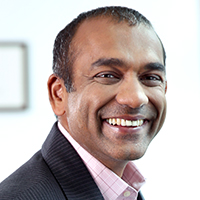Over the past few years, the gig economy has grown in Singapore and the world.
In 2020, Singapore’s proportion of own-account workers—self-employed workers who are not employers—among working residents was at a decade-high of 9.7 per cent.
A Mastercard report in 2019 shows that the global gig economy is valued at US$204.0 billion (S$275.3 billion) in 2018 and is projected to more than double to US$455.2 billion (S$614.4 billion) in 2023.
The COVID-19 pandemic has made the growth faster. Lockdowns and a fear of taking public transport mean that there is a greater demand for doorstep delivery and private hire services.
The rise of the gig economy is beneficial to at least three parties in the overall economy and may have other indirect benefits too.
First, to employees who want flexibility in their work, which may not be what every workplace can provide. These may be workers who have to take care of their children, parents or family members who have special needs. They may only be able to work a couple of hours a day, or only at certain hours of the day. For them, the gig platforms provide a valuable source of income without committing to a nine-to-five job.
The second obvious beneficiary would be the gig platforms. They make a handsome fee income from matching gig workers to the consumers. At the nascent stage of the gig economy, at least, these platforms save costs as they do not provide extensive retirement protection or healthcare benefits for the gig workers. The industry has little regulation. In a short period, some companies were able to grow fast. Some, such as Deliveroo, foodpanda and Uber grew big enough to get listed on stock exchanges.
The third beneficiary would be the customers. They relish the convenience and time savings from getting what they ordered in just a few clicks. Even if the prices are higher in some instances on the gig platforms, the savvy customer would know how to take advantage of promotions or other discount coupons. He or she can also choose between transport apps in situations of surge pricing or normal pricing hours. It is quite easy to save money if one is diligent in comparing the prices.
From a broader point of view, the gig economy may also help tackle discriminatory hiring practices.
There was once when I received a parcel, delivered by a gig worker on a wheelchair. Grab has a partnership with the Singapore Association for the Deaf (SADeaf), and deaf or hard-of-hearing Grab drivers and delivery riders are now part of their gig workforce. For those with disabilities, the gig economy opens up more employment opportunities.
The gig platform is also likely to look past race and beauty stereotypes. Due to the nature of the work, there is no need for a gig worker to be of a certain race or to have a certain look. Many studies around the world have documented that employers will discriminate on the basis of gender, racial and facial features. They can disguise these practices as job requirements – we need a Mandarin speaker for this job or we need somebody who looks appealing to our clients.
But formal studies, through consumer surveys and also looking at the micro data from the gig platforms, would be needed to show if gig platforms do indeed sidestep the human bias in hiring.
The choice of the gig worker
Some may feel that the rise of the gig economy threatens the stability of the traditional economy. It does not. The gig economy does not rob the non-gig economy of workers. What the gig economy does, is to offer employment to those who may find it hard, or disdain working in the traditional economy in the first place.
It has been reported that out of 228,200 own-account workers in Singapore last year, 84 per cent chose to do it because of the flexibility and freedom.
In a 2016 McKinsey Global Institute report with 8,000 respondents in Europe and the United States, among those who chose independent work, 70 per cent did it by choice while the rest did it due to necessity.
In other words, it is not that people become gig workers because jobs in the traditional economy are too unfulfilling, paid too little, or require skills that they don’t possess. A majority of gig workers made this choice because the job could match their lifestyles. Times have changed. A nine-to-five office job has become less desirable.
Instead of stealing workers from the traditional economy, the gig economy has added new workers to the workforce, workers who would otherwise not have entered the workforce in the first place. The gig platforms may have also helped in providing employment opportunities for marginalised workers.
New focus on health and retirement benefits
Having achieved early success, gig platforms now have to address a nagging criticism—that little protection is offered for the gig workers who contributed to the success.
Singapore Prime Minister Lee Hsien Loong spoke about the need to protect lower-wage delivery workers during his National Day Rally speech this year. A committee has been set up to come up with recommendations for the platform workers’ retirement and housing adequacy, financial protection in case of work injury, and a more balanced relationship between the gig workers and the platforms.
I see a two-pronged approach. In health benefits, the private sector, i.e. the gig platforms, should do more for their gig workers. After all, they would benefit if their workers were healthy and fulfil more transactions.
In retirement and housing contributions, both the government and the private sector could play a larger role. This is because the government and society benefit if these workers have sufficient savings for housing and retirement.
Other countries and cities have started to look more into protecting the gig workers. New York City recently passed bills to improve the pay and working conditions of the food delivery workers. One bill specifically requires the platforms to make arrangements with restaurants to make their washrooms available to delivery workers. Portugal is moving to pass laws to get gig workers recognised as staff with formal contracts and benefits.
Most initiatives are at the nascent stage. There is a void when it comes to city role models for protecting gig workers. Singapore can aim to fill that void. The new committee is a sign of government will. Time will tell whether their eventual recommendations indeed help improve protection for the gig workers.
As nations reopen their borders and economies improve, the gig economy will still have a place to stay. People’s consumption habits have changed. They have tasted the convenience of the gig platforms. They will want more.
Besides the common food and parcel delivery, some platforms are providing doorstep services such as haircuts and the repairing of electrical appliances. There is still room for growth.
The gig industry will keep growing. Let it grow, but protect the gig workers too.
The article is an abridged version of the one first published in CNA.




